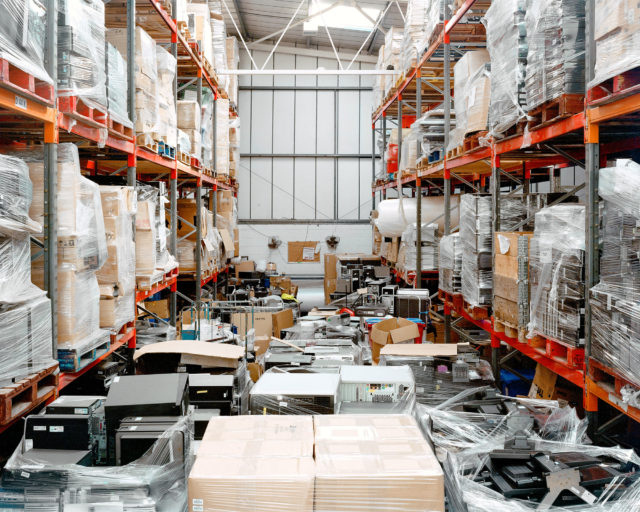Zoë Lescaze on Candida Höfer at Sean Kelly Gallery
For more than thirty years, the German photographer Candida Höfer has composed scrupulously symmetrical shots of lavish libraries, museums, opera houses, and churches, cataloguing the poetics of interior space over the course of her career. In her first show at Sean Kelly Gallery, From Düsseldorf, Höfer offered an array of palatial rooms from the title city, printed in color at an enormous scale.
Höfer allows her viewers to see these rooms more clearly and coherently than if they were actually there, and the fixed perspective and stillness captures minutiae otherwise missed. One can count the feathers on St. John’s eagle painted on the stairs leading to the elaborate gilded pulpit in Dominikanerkirche Sankt Andreas Düsseldorf (2011), or study the carvings on the ceiling of that vast, visually cluttered church. The absence of human beings makes one uncomfortably conscious of the figurative sculptures adorning these rooms; bare-breasted caryatids smile blankly, while creepy cherubim clutch bouquets and their own plump little bodies. In some cases, Höfer’s exclusion of living subjects makes her viewers acutely aware of their own participation. In Deutsche Oper am Rhein Düsseldorf I (2012), she shoots the opera house from center stage, putting us in the position of a performer standing before an invisible audience in hundreds of empty red seats.
The artist’s coldly documentarian impulse sometimes saps her images of their impact. Perhaps such spaces ought to be recorded for their historical importance, but, as works of art, these photographs don’t explore conceptual territory that Höfer hasn’t already covered in this series. When Höfer plays with the formula, however, the photos sing. The Benrather Schloss, a powder-pink rococo pleasure palace overflowing with frilly decorative details in southern Düsseldorf, looks as though it was spun out of confectioner’s sugar. In one photograph, Höfer lets—or makes—the blinding light blow out part of a polished, intricately inlaid wooden floor. By erasing some of the fussy detail she normally records, Höfer subtly sabotages the decadent space, and her purposeful slip from technical perfection defies our expectations.
Alongside Höfer’s signature shots of fussily decorated rooms, the show also includes a markedly different body of work, in which she focuses on spare architectural forms in modernist buildings. In place of vast, elaborate chambers captured in all their excess, these works present small portions of windows distorted with reflections, or bits of walls and floors. Several of the wider shots offer asymmetrical glimpses of austere, minimalist spaces, such as an empty German art gallery. Many of these don’t work. A photograph of a few beige steps bearing blue strips of tread in an institutional stairwell feels overly straightforward and banal. Photographs of a spiral staircase, however, are fantastic; other photographers have been drawn to this subject matter for its Fibonacci-fueled grace and seductive vertigo, but Höfer’s pictures abstract the architecture so dramatically that the spiral barely reads as part of a building. Neuer Stahlhof Düsseldorf I (2012), in which the stairs are shot from below, is profoundly disorienting: bright light bathes the smooth white underside of the steps, and the near-monochrome is punctuated only by the serpentine metal banister coiling up to an empty center. The image provides a counterpoint to the artist’s usual practice, introducing a welcome complexity to her understanding of space.


























